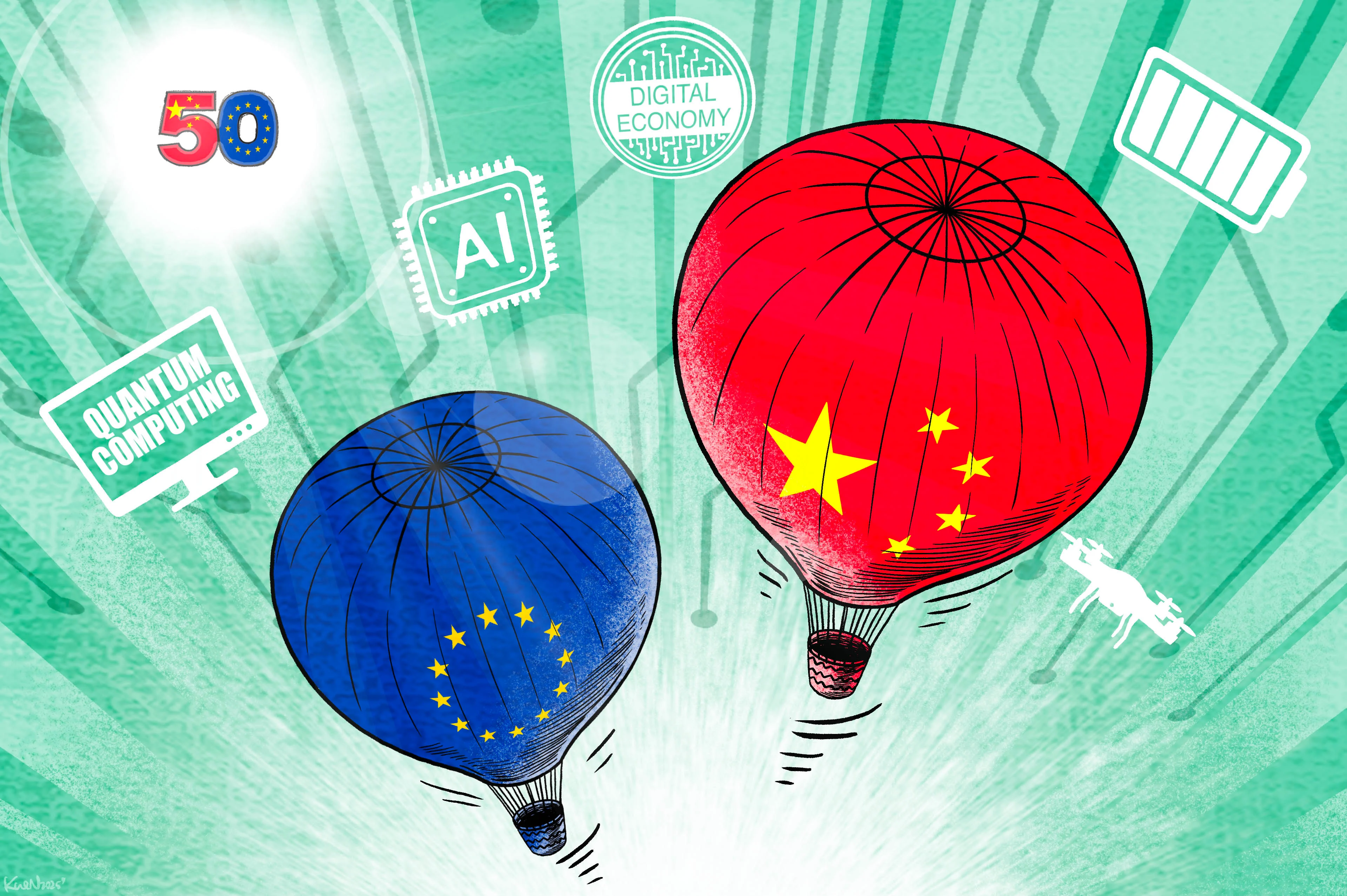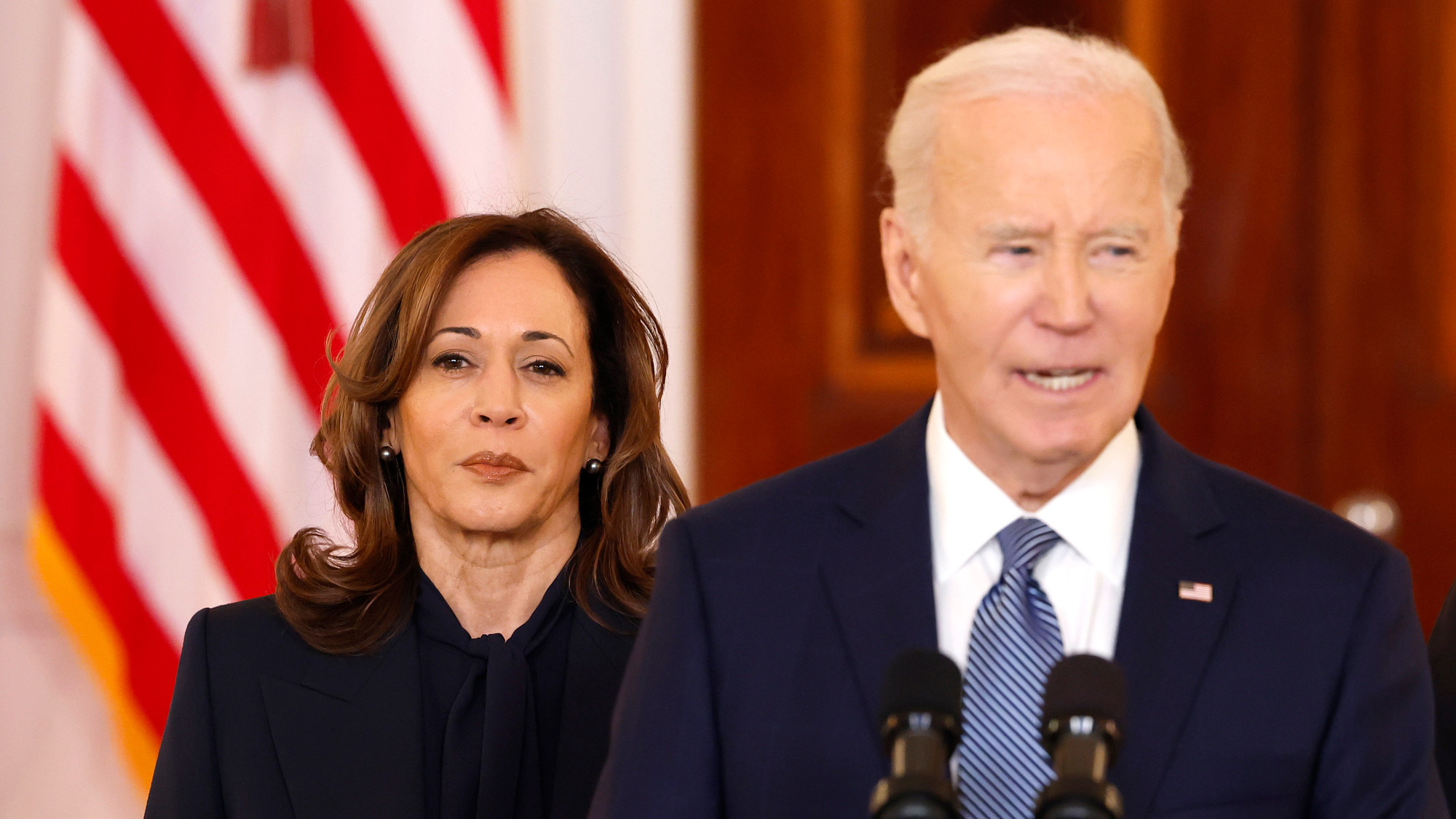By Meredith Chen,Nora Mankel
Copyright scmp

This year marks half a century of formal diplomatic relations between China and the European Union as well as the 25th anniversary of the founding of the European Union Chamber of Commerce in China. As part of a series of reports examining ties between the two powers, Meredith Chen and Nora Mankel look at how China flipped the technology script with Europe.
In 1978, as China was emerging from the ruins of the Cultural Revolution, Beijing sent a high-powered delegation on a whirlwind 36-day mission to western Europe.
They covered 25 cities in five countries – from France to West Germany – and toured dozens of factories, mines, ports, farms, universities and research institutes.
From what they saw, the officials reckoned that China was at least 20 years behind in science, technology and industry – and modernisation in general.
The country was about to embark on reform and opening up – a state policy that would usher in decades of breakneck growth – and the trip offered a clear way ahead.
The path to the next stage of economic development would be paved by science and technology, expanded trade, and an overhauled economic system.
Fast forward to today, and China has worked to free itself in many areas from its dependence on Western technology, moving up in the global value chain to become an innovation powerhouse.
Now, as China and the EU mark 50 years of diplomatic ties, Europe is on the defensive, wondering how it can catch up. The relationship is also clouded by trade frictions over what Brussels calls Beijing’s unfair market practices and state-led industrial subsidies.
Observers say the competition in technology is only set to grow, but it does not have to be zero-sum. Some European players are aiming to stay in the game by taking a tactic from the Chinese technology transfer playbook.
For decades, the deal was simple: China traded market access to European firms for Western technology.
At first, the technology flowed largely one way. Then, according to Ding Chun, director of the Centre for European Studies at Fudan University in Shanghai, it started flowing in the other direction.
“Europe used to be the teacher and China the student,” Ding said.
“But now, in many areas, the student has outpaced the teacher, and that shift has created both anxiety and fear on the European side – which is understandable.”
The tables began turning around 2001, when China joined the World Trade Organization, speeding up the country’s opening to foreign investment and forcing Chinese companies to keep up.
Tim Rühlig, a senior analyst at the European Union Institute for Security Studies, said European firms appeared to underestimate the ability of their Chinese counterparts to innovate.
“For too long, they believed that China would only catch up by mimicking Western technology. Today, nobody doubts China’s innovativeness,” he said.
“China and Europe are now less complementary and rather compete over similar market segments.
“This is one of several reasons why EU-China relations are more complicated now.”
Rühlig said their technology and innovation ecosystems were also deeply intertwined in supply chains, creating dependencies that were mutual and complex. “To understand the situation, one has to go very granular.”
Nevertheless, Europe still held a lead in many fields and there was much for China to learn, Ding said.
EU firms have retained an edge in advanced manufacturing, mechanical engineering, aerospace, robotics, precision instruments, industrial software, advanced semiconductor machinery, pharmaceuticals, nuclear technology, and foundational sciences.
Those firms are even more important to China as sources of technology as the United States restricts access to its own developments, according to Ding.
Yet Europe’s pace of innovation has slowed, falling behind the rapid advances of both China and the US.
“China has advanced rapidly by learning, digesting, and innovating, while Europe’s first-mover advantages in traditional industries have turned into relative disadvantages,” he said.
Ding said Europe had focused too much on its traditional industries like cars, machinery, chemicals, and electronics, and had not paid enough attention to frontier technologies such as artificial intelligence and information technology.
China, meanwhile, was forging on in areas like AI, the digital economy, telecommunications, renewable energy, photovoltaics, lithium batteries, electric vehicles (EVs), drones, quantum computing and supercomputers.
In the EU, there was a feeling that Europe had missed the boat and been left behind, said Javier Borràs Arumí, a researcher at the Barcelona Centre for International Affairs, a Spanish think tank.
“The prevailing mood is one of pessimism and stagnation,” he said.
But Alicia Garcia-Herrero, chief economist for the Asia-Pacific region at Natixis, said the big issue for the EU was its reliance on China’s highly developed industrial capacity – rather than the technology itself.
“It is the technology embedded in the industrial products, in the industrial capacity … that makes China kind of impossible to avoid. Everything you buy has a Chinese component in it,” she said.
The EU claims that China has gained some of this industrial might – and an unfair competitive advantage – by bending international trade rules. This includes using state subsidies in sectors such as EVs and solar panels, resulting in excess capacity that is exported to other countries at below cost – claims China has repeatedly rejected.
It has reached the point where the EU mainly views Chinese technology with fear – fear for its economy, security and values, according to Borràs.
“The EU’s attitude towards Chinese technology is now mostly defensive; it is mainly something we need to protect ourselves from,” he said. “This is also strongly influenced by US pressure to ban certain Chinese technologies.”
Analysts said part of the problem was that European firms and policymakers were too slow to realise that China had become an innovative industrial powerhouse and to address the challenges it raised.
“It took years for European policymakers and business leaders to recognise that China was shifting from a major customer to a primary competitor,” said Daniel Hamilton, a senior non-resident fellow at the Brookings Institution and at the Foreign Policy Institute of Johns Hopkins University SAIS.
And while Europe dragged its feet, China closed the gap.
Ding said that competition would only grow and criticising China’s industrial policies would not help Europe catch up.
If Europe felt “surpassed by its former student”, a wise response should be to accelerate reform and innovation rather than resort to defensive measures, Ding said.
Borràs said the EU was in a cooperation-competition conundrum, trying to balance security and competitiveness.
“If certain Chinese technologies or companies are blocked, the EU will not benefit from their competitive prices and efficiency improvements, which will harm its competitiveness,” he said.
“Prioritising security or geopolitical considerations always comes at the cost of efficiency. This trade-off will not disappear.”
He said Europe’s technological development was being held back by institutional factors such as the fragmentation of the European market and problems with scaling up local businesses.
Government also needs to be more proactive, according to Alexander Brown, a senior analyst at the Mercator Institute for Chinese Studies.
“We haven’t seen a big push from business for the government to intervene particularly in Germany, because German companies have been so successful with the free-market open trade model,” Brown said.
“But that doesn’t work when you have China engaging in a very aggressive industrial policy and creating an unlevel playing field.”
Hamilton said the EU had some room to move because China was twice as dependent on Europe for strategic imports as Europe was on China.
“Thus, the EU can make itself more indispensable to China than China is to it,” he said.
“It is likely to make more active use of its now-robust toolbox to investigate highly subsidised Chinese companies, block investments from China if EU bidders are shut out of China’s market, and apply levies to Chinese businesses using coercive tactics.”
The focus should not be on power, but on maintaining orderly competition and cooperation
Ding Chun, Centre for European Studies, Fudan University
Ding said the balancing act would continue, given that decoupling was unrealistic and one side could not have a monopoly on technology.
“Both sides have respective strengths in offence and defence. The focus should not be on power, but on maintaining orderly competition and cooperation,” Ding said.
Borràs said there were opportunities for collaboration in green technologies, where Europe could learn from Chinese tech companies investing in Europe.
“However, to truly reap the benefits, we must strike deals with Chinese companies that involve technology transfer. At the same time, the recipient government must build a robust innovation ecosystem capable of absorbing innovation and reaping the benefits of learning by doing and spillover effects,” he said.
Borràs added that the EU had “a lack of realism” about its technological power, saying it lacked the “scale and capabilities” to be on the same level as the US and China.
“It would be wiser for the EU to stop comparing itself with the US and China and to start examining the strategies of technological middle powers, such as South Korea, Taiwan and Japan,” he said.
They had adopted a “strategic specialisation model focused on controlling critical nodes” in technological value chains rather than trying to dominate whole industries, he added.
The point is not to decide whether the two sides are partners, competitors or rivals, but to explore how cooperation with a systemic rival is possible
Tim Rühlig, European Union Institute for Security Studies
Some European countries are already trying to tap into China’s technological expertise. For example, Spain is attracting Chinese investment in a bid to learn from leading firms in EVs, batteries, and green hydrogen.
Brown said major players in medical technology, advanced machinery and pharmaceuticals were also confident that they could maintain an edge by pursuing both a localisation and “run faster” strategy – investing in China and leveraging China as a source of innovation.
“But I’m unsure as to whether that strategy will work over the medium to long term … When companies do that, there’s inevitably spillover effects which then contribute to the Chinese industrial ecosystem and will help them to build up their own capabilities,” he said.
“By and large the EU is open to investment from China, and if that can facilitate tech transfers in Europe’s favour, that’s exactly what the EU wants to see. The main challenge there is that China also wants to maintain its technological lead, where it has it.”
Rühlig said China needed to acknowledge that Europe’s “remarkably open” market received high quantities of highly subsidised Chinese technology exports, threatening the competitiveness of EU firms.
“Unless China and Europe agree that this is a challenge to the relations I am afraid that the EU will be frightened and therefore close its market,” he said.
Voluntary price floors for Chinese technology could help, and Europe had to improve the conditions at home for innovation, he said.
“The point is not to decide whether the two sides are partners, competitors or rivals, but to explore how cooperation with a systemic rival is possible and what systemic rivalry means if you need to cooperate at the same time,” Rühlig said.



